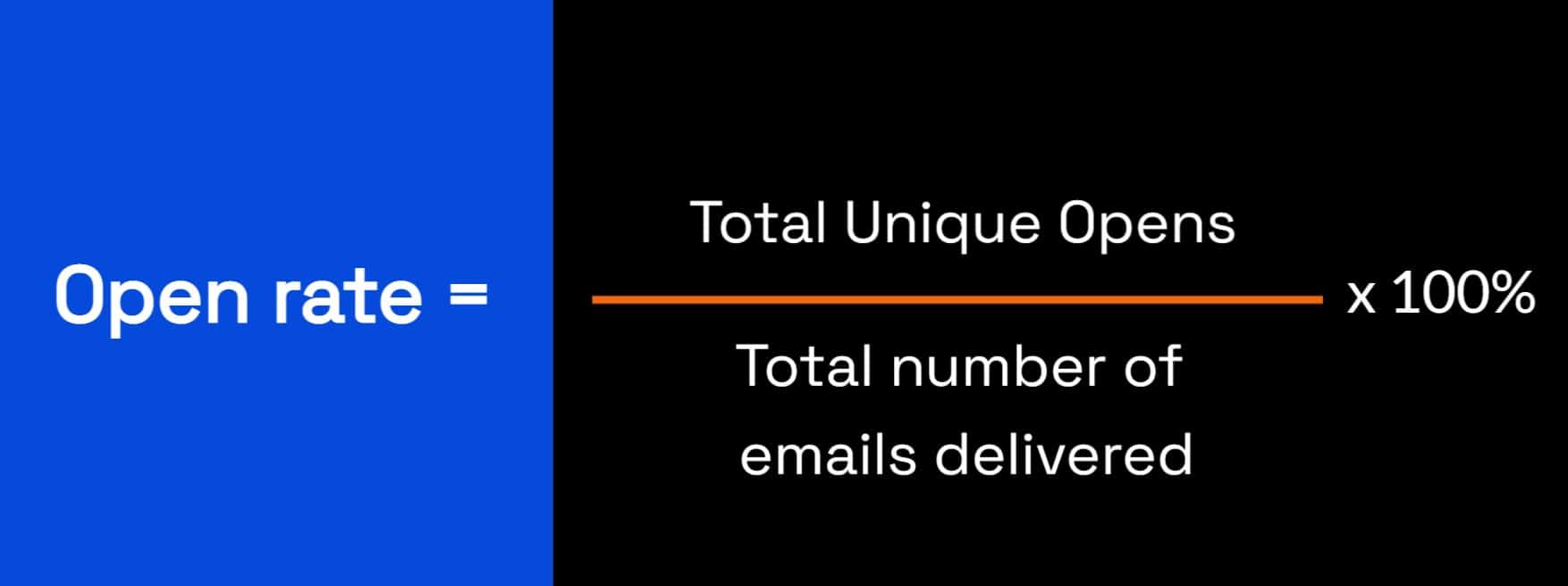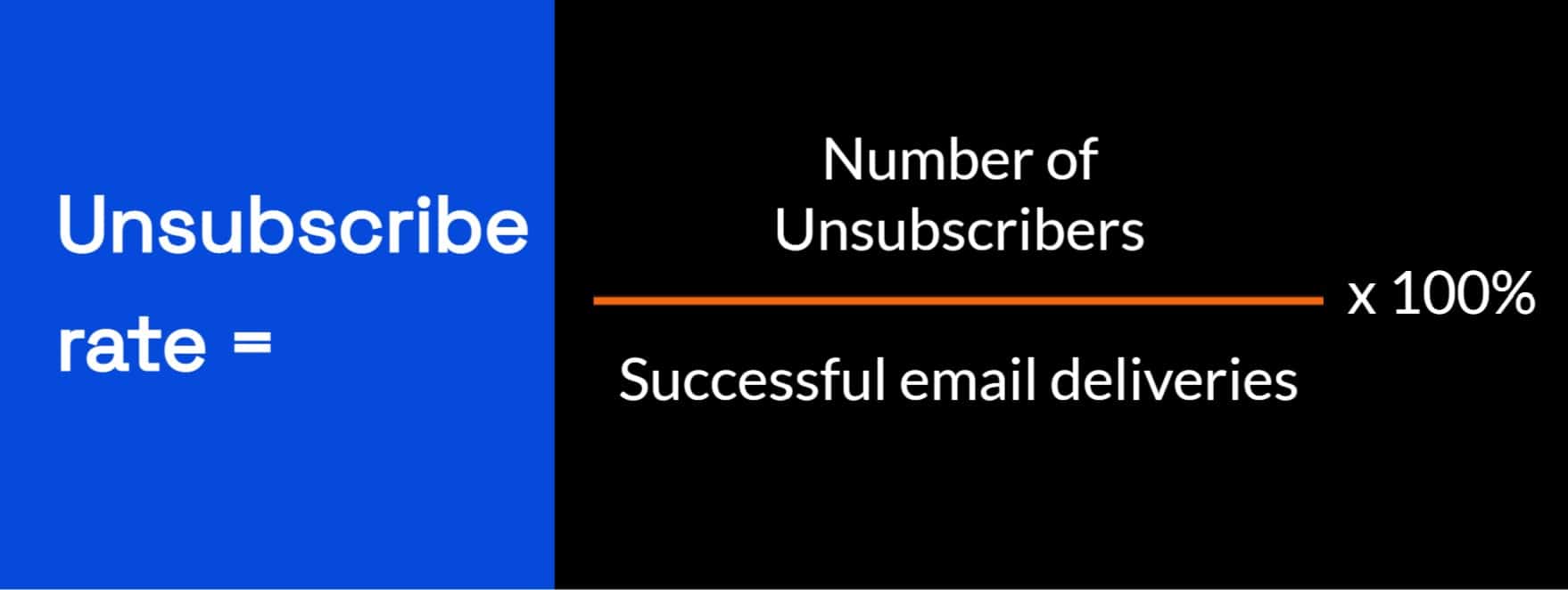In today’s digital landscape, cold email campaigns have emerged as a game-changing strategy for businesses seeking to expand their horizons and generate valuable leads. But what exactly are cold email campaigns, and why are they an indispensable tool in driving business growth? A cold email campaign involves reaching out to potential customers or clients who have not yet interacted with your brand through unsolicited emails. The primary objective is to introduce your products or services, establish a meaningful connection, and ultimately convert these prospects into loyal paying customers. In this guide, we’ll help you discover the key metrics for measuring your cold email campaign success.
Click here to learn how to create irresistible cold emails!
Key Metrics To Track in Cold Email Campaigns: Unlocking the Secrets of Success
If you want to take your cold email campaigns to new heights, it’s crucial to track key metrics that provide valuable insights into their effectiveness. By diving deep into these metrics, you can make data-driven decisions and optimize your outreach efforts for maximum impact. Let’s explore why tracking these metrics is so important and discover the top ones you should be monitoring.
Unveiling the Power of Metrics in Cold Email Campaigns
Metrics are like a compass guiding your cold email campaigns toward success. They are measurable data points that reveal how well your emails are performing and highlight areas where improvements can be made.
Tracking metrics is essential because it allows you to:
- Measure success: Metrics provide tangible evidence of whether or not your campaign is hitting its targets.
- Identify areas for improvement: Analyzing specific metrics helps pinpoint which elements need optimization, ensuring every aspect of your campaign shines.
- Make data-driven decisions: Say goodbye to guesswork! Tracking metrics empowers you with real-time data, enabling informed decision-making based on solid evidence.
The Essential Metrics You Need to Track in Cold Email Campaigns
Now, let’s explore the key metrics you should be tracking in your cold email campaigns:
- Open rates: Measure the percentage of recipients who eagerly open up your emails. This metric reveals how captivating your subject lines and sender names truly are.
- Click-through rates (CTR): Measure the percentage of recipients who can’t resist clicking on links within your emails. It showcases how compelling and persuasive your content is at driving action from readers.
- Conversion rates: Unveil how many recipients take desired actions after opening an email – such as making a purchase or signing up for a webinar. This metric directly reflects the effectiveness of your call-to-action and overall campaign strategy.
- Bounce rates: Represent the percentage of undelivered emails due to invalid addresses or technical glitches. Keeping an eye on bounce rates ensures a clean contact list and guarantees deliverability.
- Unsubscribe rates: Reveal the percentage of recipients who opt-out from receiving further emails. Monitoring this metric helps you gauge the relevance and value of your content to your audience.
- Response rates: Measure the percentage of recipients who engage in a conversation with you after receiving an email. This metric showcases just how effective your messaging and personalization efforts truly are.
By diligently tracking these key metrics, you’ll gain invaluable insights into the performance of your cold email campaigns. Armed with this knowledge, you can make informed decisions that optimize future outreach efforts for unrivaled success.
Unlocking the Power of Open Rates
When it comes to gauging the success of your cold email campaigns, tracking open rates is an essential metric that cannot be overlooked. Open rates measure the percentage of recipients who actually open and engage with your emails. This valuable statistic provides deep insights into the effectiveness and allure of your subject lines and email content.
Why Are Open Rates Important?
- Assess effectiveness: Monitoring open rates allows you to evaluate whether your emails are capturing the attention of your target audience. A high open rate signifies that recipients find value in what you have to say, indicating a successful campaign.
- Measure engagement: Open rates serve as a tangible measure of engagement with your brand or business. When someone opens an email from you, it demonstrates their active interest in learning more about what you offer.
- Refine strategies: By tracking open rates, you gain the ability to experiment with different subject lines, preview text, or sender names to identify which elements generate higher engagement levels. This data-driven approach empowers you to refine your email marketing strategies for optimal results.

How To Improve Open Rates
- Craft captivating subject lines: Your subject line should be concise yet compelling enough to entice recipients into clicking and exploring further.
- Personalize each message: Tailor every email based on recipient preferences or previous interactions with them. Personalization creates a sense of relevance and significantly increases the likelihood of opening.
- Optimize send times: Experiment with various days and times when sending out cold emails to determine when your target audience is most actively checking their inbox.
- Segment your audience strategically: Divide your contact list into smaller segments based on demographics, interests, or behavior patterns so that you can create highly targeted and relevant content for each group.
- Utilize A/B testing effectively: Test different variations in subject lines, preview text, or even entire templates by randomly assigning two groups within your recipient list. Analyze the open rates to identify which version performs better and optimize accordingly.
Remember, while tracking open rates is crucial, it is just one piece of the puzzle when measuring the effectiveness of your cold email campaigns. In our next section, we will delve into another vital metric: click-through rates.
The Significance of Click-Through Rates
When it comes to measuring the effectiveness of your email campaigns, open rates only tell part of the story. While it’s important to know how many people are opening your emails, what really matters is whether they are taking action and clicking on the links within.
A high CTR indicates that recipients not only opened your email but were also compelled by its content to take further action. This could be visiting a blog post, signing up for a webinar, or making a purchase. It signifies genuine interest and engagement from your audience.
On average, across industries, the click-through rate for cold emails hovers around 2-3%. However, this should not discourage you; there are strategies you can implement to improve these numbers significantly.
How To Improve CTR in Email
Firstly, crafting compelling subject lines and preview text is crucial for enticing recipients to open and engage with your emails. Personalization plays a key role here – addressing individuals by their name or tailoring content based on their preferences can greatly increase open rates.
Secondly, ensure that the body of your email delivers value and relevance. Provide concise yet informative content that addresses pain points or offers solutions. Use persuasive language and include clear call-to-action buttons that encourage readers to click through.
Tracking CTRs allows you to measure campaign success accurately. By analyzing which emails have higher click-through rates compared to others, you gain insights into what resonates best with your audience. This data empowers you to refine future campaigns accordingly for even better results.
Click-Through and Conversion Rates
Understanding CTRs helps determine conversion rates—another essential metric in evaluating campaign performance. A high CTR often correlates with increased conversions, as it indicates that your email content successfully drives recipients to take desired actions.
In the B2B realm, where sales are often driven by relationship-building and nurturing leads, CTRs play a crucial role. By tracking click-through rates on emails sent during different stages of the sales funnel, you can identify which messages resonate most with prospects and tailor future outreach accordingly.
Bounce Rates and Their Impact
When you send out a cold email or a newsletter to promote your blog or business, you want as many people as possible to open and engage with it. However, if your bounce rate is high, it means that a significant portion of your emails are not reaching their intended recipients.
High bounce rates can be caused by various factors, such as invalid or inactive email addresses, technical issues with the recipient’s server, or even spam filters blocking your messages. Regardless of the reason behind it, a high bounce rate indicates that there are obstacles preventing successful outreach.
How To Measure and Track Bounce Rates
It’s essential to use reliable tracking tools and software specifically designed for email marketing campaigns. By monitoring these metrics closely, you gain valuable data on how well your campaigns are performing. You’ll know exactly which subject lines generate higher open rates and which content resonates best with your audience. Armed with this knowledge, you can make informed decisions about what works best for future outreach efforts.
Now, let’s talk about why reducing bounce rates should be one of your top priorities:
- Improve deliverability: High bounce rates hurt your sender’s reputation and decrease the chances of your emails reaching the inbox. Manage and reduce bounces by removing invalid or inactive email addresses to boost your reputation and ensure better email delivery.
- Increase engagement: When your emails reach their recipients, it leads to higher open rates, more click-throughs, and ultimately more conversions and sales. Lower bounce rates set you up for success by ensuring that your messages are seen by those who need them.
- Accurate data: Tracking bounce rates helps you maintain precise campaign performance data. It reveals audience behavior trends, allowing you to refine targeting strategies and create better content.
Remember, reducing bounce rates requires ongoing effort – regularly cleaning up your email list, using reliable tracking tools, and crafting compelling subject lines – all contribute to improving deliverability and engagement with your target audience.
Unsubscribe Rates: A Metric Not To Ignore
Unsubscribe rates measure the percentage of recipients who choose to disengage from receiving further emails from you. It is a clear indication that something in your campaign is not resonating with your audience. By measuring these rates, you gain valuable information about how well your emails are being received and whether they align with the expectations and interests of your subscribers. This metric allows you to identify any potential issues or areas for improvement within your email marketing strategy.
Why Is Tracking Unsubscribe Rates Important?
- Measure engagement: If people are consistently opting out, it’s a sign that they no longer find value in what you have to offer or that their needs have changed over time.
- Identify content relevance: High unsubscribe rates can indicate that the content you’re delivering doesn’t align with what subscribers signed up for initially.
- Improve segmentation: Tracking unsubscribes helps pinpoint specific segments within your subscriber base that may require more personalized messaging or different types of content altogether.
- Enhance deliverability: ISPs (Internet Service Providers) take note when recipients mark emails as spam or hit “unsubscribe.” By actively managing unsubscribe rates, you can maintain a positive sender reputation and ensure that your emails reach the intended inboxes.
- Optimize conversion rates: Analyzing unsubscriber metrics allows you to identify potential barriers or friction points in the customer journey, enabling you to make necessary adjustments for better results.

How To Effectively Measure and Interpret These Metrics
- Set a benchmark: Start by establishing an average baseline for unsubscribe rates within your industry or niche. This benchmark will help you gauge whether your current rate falls within acceptable ranges or if it requires improvement.
- Regularly monitor campaign performance: Keep a close eye on individual campaign performance by tracking open rates, click-through rates (CTRs), conversions, as well as unsubscribes. Look for patterns or correlations between these metrics to gain deeper insights into what’s working and what needs adjustment.
- Actively seek feedback: Include an option for subscribers to provide feedback when they decide to unsubscribe from your emails. This valuable input can shed light on specific pain points or areas where improvements are needed.
Success in email marketing goes beyond just high open or click-through rates. It’s about building a dedicated subscriber base that stays engaged over time. By closely monitoring unsubscribe rates and other key metrics, like opens and clicks, you’ll gain the insights needed to continuously improve your campaigns.
Response Rates and Their Importance
Response rates are the lifeblood of measuring the success of your cold email campaigns. These rates represent the percentage of recipients who actively engage with your emails by replying or taking some form of action. Tracking response rates is not just a numbers game; it provides invaluable insights into how well your emails resonate with your target audience.
Why Should You Track Response Rates?
- Measure engagement: Response rates serve as a powerful indicator of how engaged your audience is with your emails. A high response rate signifies that recipients find value in what you’re offering and are willing to invest their time in responding.
- Gauge interest: By analyzing response rates, you can identify prospects who genuinely express interest in your product or service. These individuals are more likely to convert into customers, making them valuable leads for further nurturing.
- Refine targeting: Low response rates may indicate the need to refine your targeting strategy. By identifying patterns among non-responsive recipients, such as specific industries or job titles, you can adjust your approach and focus on reaching those who are more likely to respond positively.
Effective Strategies for Increasing Response Rates
- Personalization: Tailor each email specifically for the recipient by addressing them by name and incorporating relevant information about their company or industry. This demonstrates that you’ve done a thorough research and significantly increases the likelihood of receiving a positive response.
- Clear call-to-action (CTA): Ensure that every email includes a clear CTA that prompts recipients to take action, whether it’s scheduling a meeting, requesting more information, or providing feedback. A strong CTA encourages engagement and makes it easier for recipients to respond.
- Strategic follow-ups: Don’t be discouraged if you don’t receive an immediate response! Follow up with personalized reminders at appropriate intervals without being overly pushy or spammy. Persistence combined with thoughtful follow-ups can greatly improve overall response rates.
- A/B testing: Experiment with different subject lines, email templates, and CTAs to determine which variations generate higher response rates. A/B testing allows you to optimize your emails based on data-driven insights and continuously improve the effectiveness of your campaign.
Remember, tracking goes beyond mere numbers; it’s about understanding how well your cold email campaigns resonate with your target audience. By analyzing and optimizing these rates, you can refine your approach, increase engagement, and ultimately achieve better results from your outreach efforts.

